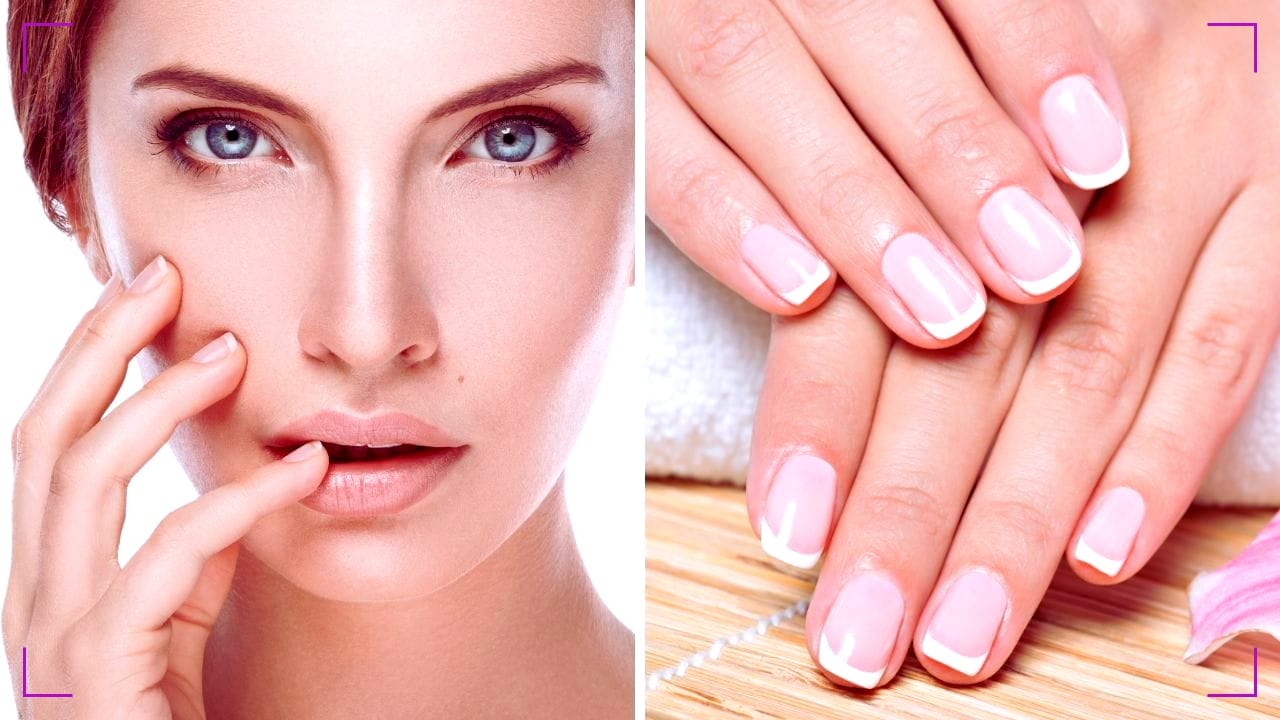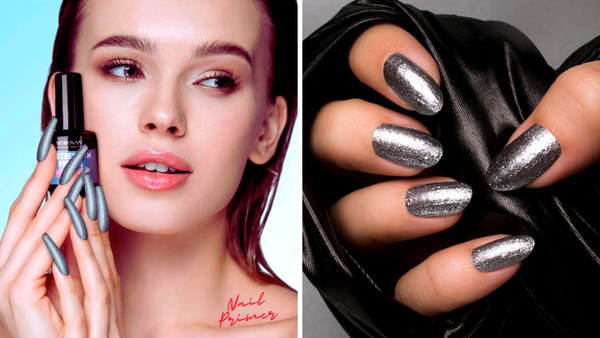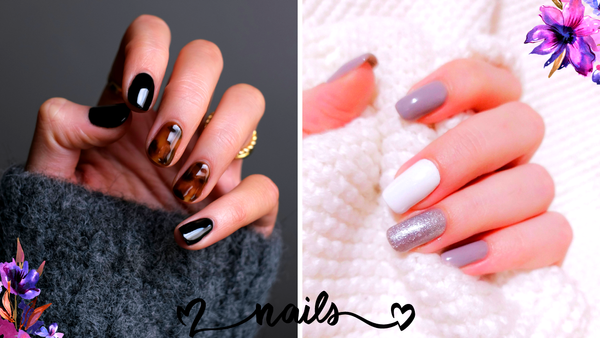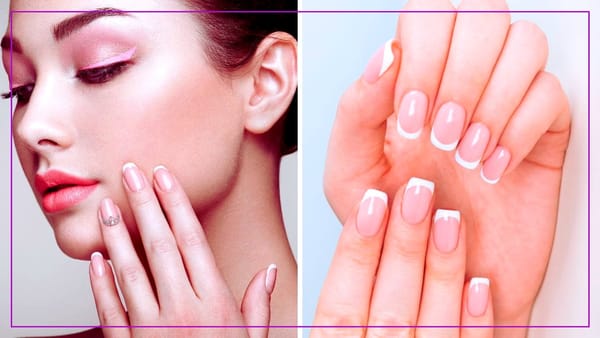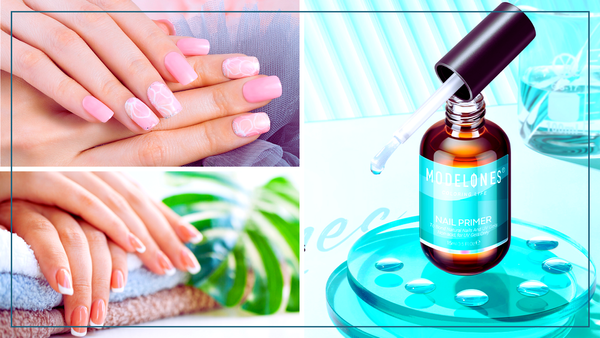Key Takeaways:
- Primer for acrylic nails is a crucial product that ensures the adhesion of acrylic to the natural nail.
- There are two main types of nail primers: acid and non-acid primers, each with its specific use and benefits.
- Applying nail primer can prevent lifting and prolong the longevity of acrylic nails.
Acrylic nails have become a staple in the beauty industry, offering a durable and customizable option for those seeking to enhance their nail game. However, the secret to long-lasting and strong acrylic nails lies beneath the surface, in the form of a little-known hero: nail primer. In this comprehensive guide, we'll delve into what primer for acrylic nails is, its types, and how to use it effectively.
Understanding Nail Primer
Before we can appreciate the role of nail primer, it's essential to understand its function. Nail primer is a preparatory product applied to the natural nail before applying acrylics. It's designed to create a suitable surface for acrylic adhesion, ensuring that the artificial nails stick properly and last longer.
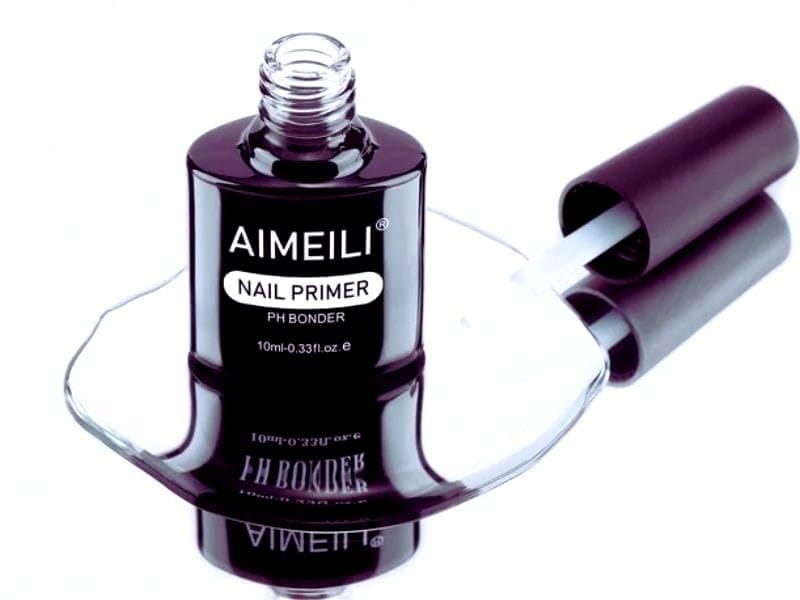
The Role of Nail Primer in Acrylic Application
When applying acrylic nails, the nail surface must be free from excess oils and moisture to prevent lifting and promote longevity. Nail primer works by altering the pH level of the nail plate, creating a chalky finish that allows for better adhesion of the acrylic powder to the nail bed.
Acid vs. Non-Acid Primers
There are two primary types of nail primers: acid primers and non-acid primers. The acidic primer contains methacrylic acid, which etches the nail surface to create a stronger bond. Non-acid primers, on the other hand, are less aggressive and work by removing oils and moisture without the etching process.
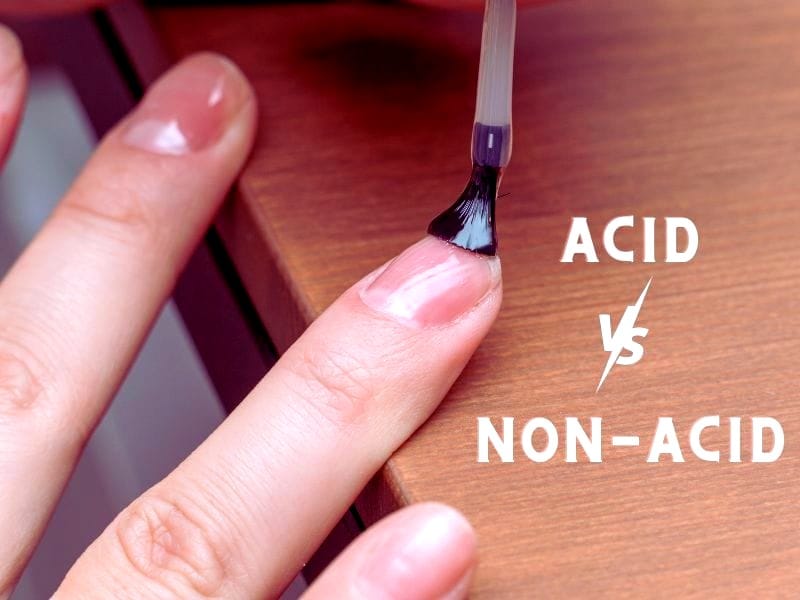
The Importance of Choosing the Right Primer
Selecting the best primer for your nails is crucial. Acid primers are often recommended for problematic nails with difficulty adhering to acrylics. In contrast, non-acid primers are suitable for those with sensitive skin or looking for a less harsh option.
How to Apply Nail Primer Correctly
Proper application of nail primer is key to achieving desired results. It should be applied thinly, avoiding the skin and cuticle area. Over-application can lead to primer burn and damage to the natural nails.
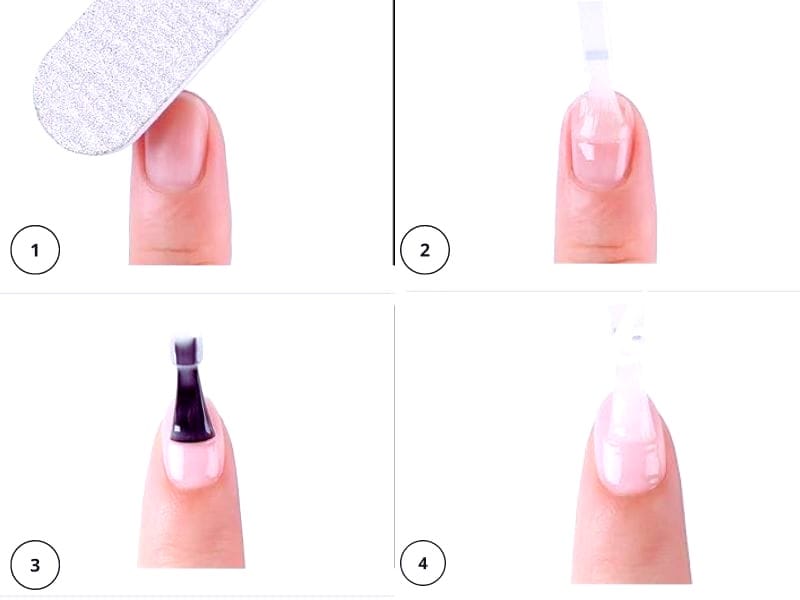
Primer and Gel Nails: A Complete System
While primarily associated with acrylic nails, primer is also used in gel systems. Gel primer ensures gel adhesion, much like an acrylic primer does for acrylic nails. It's an integral part of the base coat application in gel nail polish routines.
The Difference Between Primer and Dehydrator
It's important to distinguish between nail primer and nail dehydrator. A nail dehydrator is applied before the primer to remove moisture and oils from the nail plate, preparing it for the primer and acrylic application.
The Synergy Between Primer and Base Coats
Nail base coats and primers work in tandem. While the primer prepares the nail surface, the base coat provides a foundation for the nail polish or acrylic to adhere to, enhancing the overall durability of the manicure.
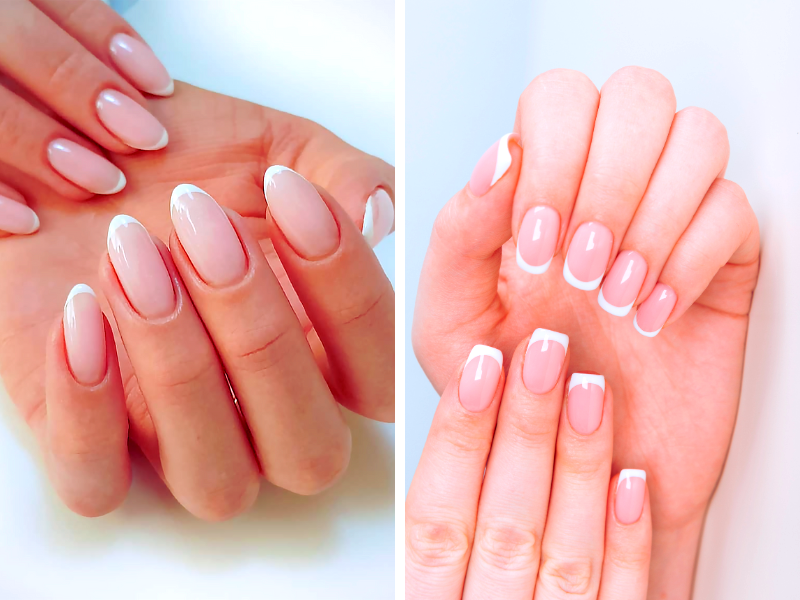
Primer as an Adhesion Promoter
Think of nail primer as an adhesion promoter. Its primary purpose is to ensure that the acrylic powder sticks to the natural nail effectively, reducing the chances of lifting and providing a solid foundation for the artificial nails.
Preventing Lifting with Proper Primer Use
One of the most frustrating issues with acrylic nails is lifting. By using the right primer and applying it correctly, you can significantly reduce the chances of your acrylic nails lifting from the natural nail plate.
The Science Behind Nail Primer Efficacy
Understanding the science behind nail primer efficacy can be quite fascinating. A primer's main job is to prepare the nail surface for applying acrylics or gel systems, ensuring that the product adheres properly and lasts longer. This is achieved through a chemical reaction between the primer and the natural nail, which creates a stronger bond for the acrylic or gel to latch onto. For instance, an acid primer might etch the nail's surface, creating a better grip for the acrylic powder. On the other hand, non-acid primers work by balancing the pH level of the nail bed, which also promotes better gel adhesion.
The choice between acid and non-acid primers often comes down to the condition of the client's nails and the desired results. For those with healthy, resilient nails, an acidic primer might be the best for ensuring a long-lasting manicure. However, for clients with more sensitive nails, a non-acidic nail bonder might be the preferred option to prevent lifting while maintaining the integrity of the natural nail. It's this intricate balance between the chemistry of the primer and the physiology of the nail that makes the application of nail primers a nuanced art as much as it is a science.
The Drying Time of Nail Primers
Unlike nail polish, nail primers typically have a very quick drying time. This allows for a swift transition to applying acrylics, ensuring a smooth and efficient nail application.
Choosing the Right Primer for Your Nails
With a plethora of nail primer brands on the market, it's essential to choose one that suits your nail type and the acrylic system you're using. Researching and selecting a reputable brand can make all the difference in the outcome of your acrylic nails.
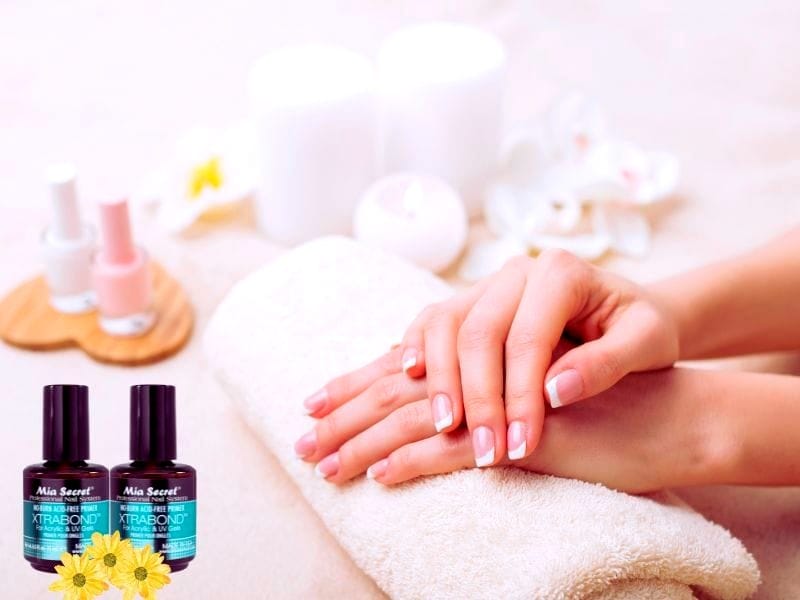
The Application Process: Step by Step
Applying primer is a straightforward process. After preparing the nail and applying a dehydrator if necessary, a thin coat of primer is brushed onto the natural nail, avoiding the skin and cuticle. Once dry, you can proceed with the acrylic application.
The Impact of Primer on Gel Polish Adhesion
For gel polish enthusiasts, primer can also play a role in adhesion. A thin layer of gel primer can help the gel polish adhere better to the natural nail, ensuring a longer-lasting manicure.
Troubleshooting Common Primer Issues
Sometimes, even with the use of a primer, issues can arise. If you experience lifting or poor adhesion, it may be due to improper primer application, an incompatible primer and acrylic system, or a need for better nail preparation.
Maintaining Acrylic Nails with Primer
Proper maintenance of acrylic nails includes regular fills and taking care not to expose the nails to harsh chemicals or excessive moisture. Using primer as part of your routine can help maintain the integrity of your acrylics between salon visits.
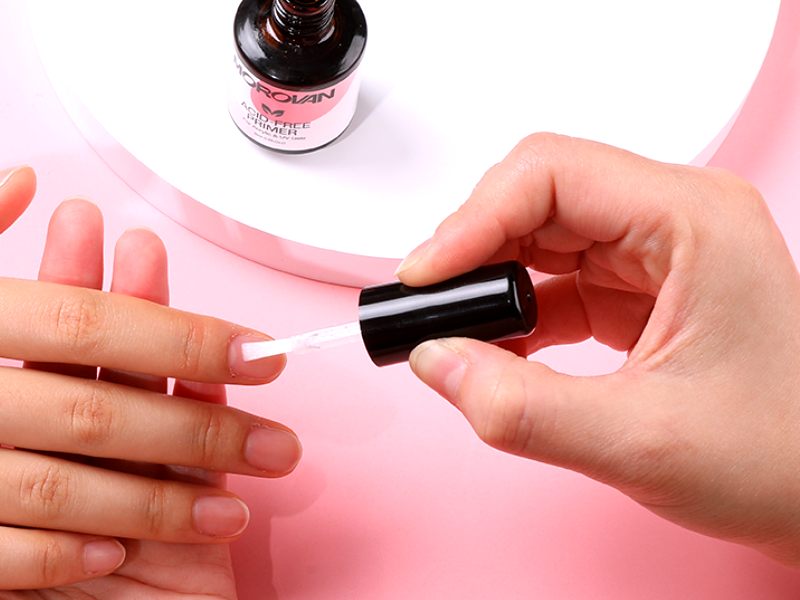
The Role of Primer in Nail Art
For those who love nail art, primer is just as important. It ensures that any decorative elements or additional layers of polish adhere well to the acrylic base, allowing for more creative and long-lasting nail art designs.
The Safety of Using Nail Primers
While nail primers are generally safe when used correctly, it's important to follow the manufacturer's instructions and avoid contact with the skin. Acidic primers, in particular, should be handled with care to prevent irritation or burns.
The Environmental Impact of Nail Primers
As with many beauty products, it's worth considering the environmental impact of nail primers. Opting for brands that use eco-friendly packaging and non-toxic formulas can help reduce your beauty routine's environmental footprint.
Summary
Acrylic nail primer is an essential component in applying acrylic nails, serving as the foundation for strong adhesion and long-lasting wear. Understanding the difference between acid and non-acid primers, proper application techniques, and the role of primer in both acrylic and gel systems can help ensure the success of your manicure. By choosing the right primer and using it correctly, you can enjoy beautiful, durable acrylic nails with minimal lifting and maximum longevity.
FAQ Section
Can I use nail primer with gel nails and acrylic nails?
Yes, nail primer can be used with gel and acrylic nails. It is an adhesion promoter for gel systems, just like for acrylics.
How often should I apply primer to my nails?
Primer should be applied each time you get a new set of acrylic nails or when you're doing a fill. It's not meant for daily or frequent application.
Is it necessary to use both a nail dehydrator and a primer?
While not always necessary, using both can provide the best preparation for your nails. A dehydrator removes excess oils and moisture, and the primer ensures proper adhesion of the acrylic or gel to the nail plate.
